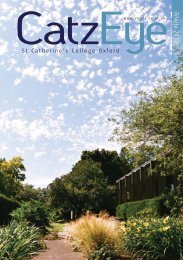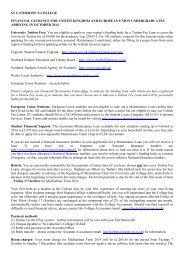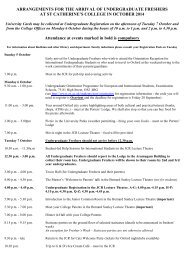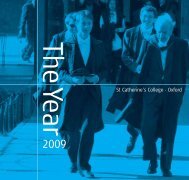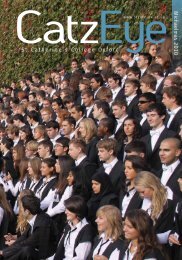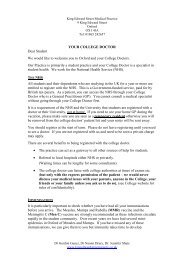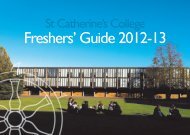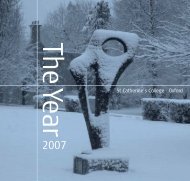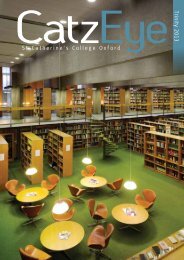Download PDF - St. Catherine's College
Download PDF - St. Catherine's College
Download PDF - St. Catherine's College
- No tags were found...
You also want an ePaper? Increase the reach of your titles
YUMPU automatically turns print PDFs into web optimized ePapers that Google loves.
COLLEGE CATZ FELLOWS LIFEJustine PilaTutor in Law and University Lecturerin Intellectual Property LawCopyright and patents reward expressiveand inventive endeavour. My research inboth areas reflects my wider interests inthe creative and technological arts, andwhat might loosely be described as law’sintellectual history: the way in which legalideas are constructed. These interestswere furthered at university by studyingmathematics and arts alongside Law, andare reflected in my recent legal research.For example, in copyright I have beenwriting on the statutory categories ofliterary, dramatic, musical and artistic works.My thesis has been that the law’s treatmentof these categories reflects a formalisticconception of the work that, even acceptingthe premise of formalism, is theoreticallyproblematic in its dependence on differentconceptions of form, reflecting differentconceptions of the copyright work. I havealso argued however that the premise isfalse, citing among other things the law’sfailure properly to distinguish music fromnoise, sculpture from three-dimensionalobjects, and literary works from collections ofwords. Considering the nature of copyright asa right to prevent certain uses of a work forseventy years from the death of its author,the absence of a coherent exposition ofworks is a matter of legal and social concern.To give an example of the issues, in the1970s, rock star Adam Ant’s managerclaimed Adam Ant’s maquillage to be acopyright painting. The Court rejected theclaim, reasoning that a painting is paintapplied to a surface, paint on a face ispaint without a surface, and paint withouta surface is an idea and not a work. As aresult, the defendant was free to copy theexpression fixed in Adam Ant’s make-up.Cases like this are difficult for law, for whilethe end result has intuitive force – it is difficultto think of make-up as painting, and of peoplehaving rights in respect of their image – it isbased on the entirely unconvincing reasoningthat a painting is any expression in paint, anda body an inadequate surface for paint.In effect, my suggestion has been thatany exegesis of the copyright work mustexplain why the Court may have been rightin deciding that the maquillage of AdamAnt was not a painting in law, but mightequally have been wrong had he been anindigenous Australian corroboree dancer.The reason is not that the body of thelatter qualifies as a surface where AdamAnt’s did not, but that paintings areconstituted only partly by their form,and partly by the history of their specificcreation; the intent of their authors andview of society with respect to their natureas paintings per se. Motivating this viewis an understanding of authorship as ashared and evolving tradition; a sociallyand institutionally situated practice thatinforms the way in which works are viewedwithout detracting from their expressivesignificance as such.History is central to my understanding ofworks. In a different way, it is also centralto my research in patents.50/JUSTINE PILA



